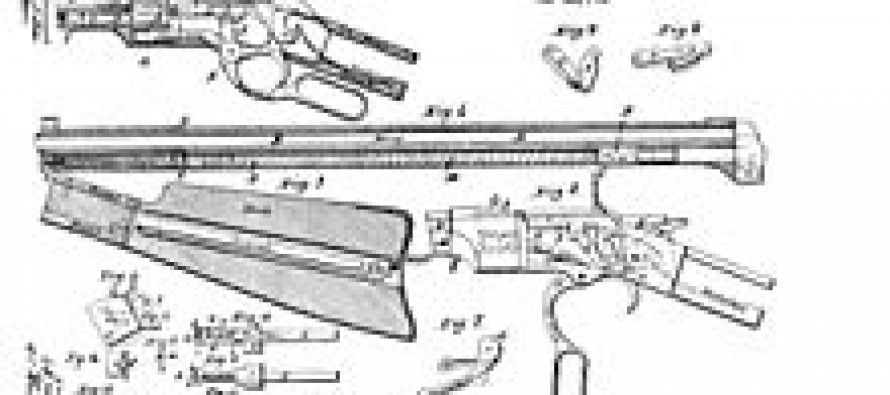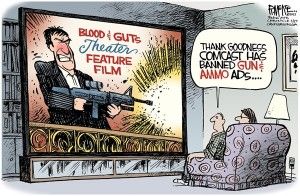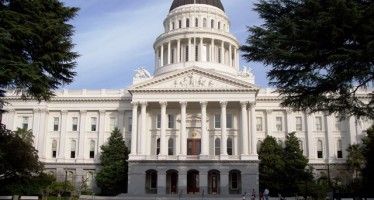Gun controllers fire volley of bills through Legislature

 A new Harvard University study found that gun bans don’t lower the murder rate. That hasn’t prevented the California Legislature from firing a fusillade of new gun-control laws.
A new Harvard University study found that gun bans don’t lower the murder rate. That hasn’t prevented the California Legislature from firing a fusillade of new gun-control laws.
AB 711, by Assemblyman Anthony Rendon, D-Lakewood, would make California the first state in the nation to prohibit the use of all lead ammunition for hunting. According to Sam Paredes with Gun Owners of California, extensive research has shown that traditional lead ammunition does not pose a health hazard for hunters. And a recent study found that, despite 99 percent hunter compliance, a ban on using lead ammunition in certain areas of the state under AB 821 of 2008 failed to reduce lead poisoning in condors.
AB 180, by Assemblyman Rob Bonta, D-Oakland, would repeal state firearms preemption in Oakland by allowing the city to enact ordinances more restrictive than state laws on the registering and licensing of firearms. AB 180 would allow the city of Oakland to create anti-gun policies much more strict than the rest of the state. Criminals still could get guns in other California cities, or in Nevada.
AB 231, by Assemblyman Phil Ting, D-San Francisco, would expand the law pertaining to the storage of firearms. This bill would make it a crime if a child gets access to an unlocked firearm. According to Gun Owners of California, AB 231 is a misguided proposal that imposes unprecedented liability on legal gun owners.
Senate anti-gun bills
SB 475, by Sen. Mark Leno, D-San Francisco, would allow San Francisco officials to ban gun shows in the Cow Palace at the Fairgrounds, one of the last remaining legal gun venues in the city.
SB 374, by Sen. President Pro Tem Darrell Steinberg, D-Sacramento, would ban the sale of all semiautomatic centerfire rifles with a detachable magazine, even with bullet buttons attached. And it redefines these firearms as “assault weapons.” This legislation would ban most common hunting rifles, including the Marlin Camp Carbines (.45acp and 9mm), Remington M81 “Woodmaster,” Winchester M1905, BAR MK II, BAR Short Trac, Ruger Mini 14, Ruger Ranch Rifle, M1 Carbine. SB 374 would also require registration of currently owned detachable magazine rifles.
SB 396, by Sen. Loni Hancock, D-Berkeley, is one of the most repressive gun control bills. The bill would retroactively confiscate guns lawfully purchased and owned. SB 396 would ban the possession of all standard capacity magazines over 10 rounds, which generally means any detachable ammunition feeding device with the capacity to accept more than 10 rounds of ammunition.
However, a 2001 study from the Jerry Lee Center of Criminology, University of Pennsylvania, found “no evidence of reductions in multiple-victim gun homicides or multiple-gunshot wound victimizations” as a result of the federal ban on standard capacity magazines.
SB 567, by Sen. Hannah-Beth Jackson, D-Santa Barbara, would redefine the meaning of a shotgun. SB 567 would remove from the Penal Code the requirement that a shotgun be fired from the shoulder, change the definition to include rifled bores, and make any weapon for which shotshell-type ammunition exists a “shotgun.”
SB 567 would also ban the sale of shotguns that have a revolving cylinder and requires registration of these currently owned shotguns.
SB 683, by Sen. Marty Block, D-Los Angeles, expands California’s handgun safety certificate requirement to apply to all firearms, and would prohibit anyone from purchasing or transferring any firearm without a firearm safety certificate.
SB 755, by Sen. Lois Wolk, D-Davis, would expand the list of persons prohibited from owning a firearm.
The Assembly Appropriations Committee recently sent four anti-gun bills to the suspense file, but those can be heard at any time.
Bullets make guns deadly
One of the bills on the suspense file is Assemblywoman Nancy Skinner’s AB 48, which would ban the sale of magazine parts kits that can hold more than 10 cartridges, and require mandatory reporting of law-abiding citizens who purchase more than 3,000 rounds of ammunition within a five-day period.
AB 48 requires the reporting of ammunition sales, requires the licensing of ammunition dealers, and establishes other controls on ammunition sales similar to current controls on firearms sales.
And AB 48 makes it illegal for gun owners to purchase parts that allow them to convert their guns into assault-style weapons that can fire more than 10 rounds of bullets without reloading.
Skinner, D-Berkeley, says it’s easier to buy bullets than to buy alcohol, cigarettes or certain cold medicines. “Sales of some cold medicines are reported to the Department of Justice but not ammunition sales,” Skinner said at a hearing in April. “We expect to show ID to buy alcohol or tobacco, but there is no such requirement for bullets.”
But Skinner is putting the target on lawful gun owners, who purchase ammunition and gun kits legally from gun stores. Criminals don’t shop for legal gun merchandise at gun stores.
Mounting evidence
If history is right, more gun control laws always means more crime and government control. American cities with the strictest gun ownership laws, such as Chicago, also have the highest crime and murder rates.
Interestingly, according to safety expert Steve Curtis, “criminals are generally in favor of more stringent gun controls because it makes their criminal activities safer.”
“Rather than following the progressive model of gun control, where law-abiding citizens are disarmed and only criminals possess firearms that worked so well in Nazi Germany, Soviet Russia, Australia and Britain, Americans should be looking at the immense success of “universal” gun ownership in places like Switzerland or Kennesaw, GA,” Curtis said. In Kennesaw, all citizens are required to own at least one firearm and keep ammunition, resulting in the lowest crime rate of any city its size in America. ”
Crime statistics show the downward trend is positive, as word of the “armed city” spreads.
Related Articles
Really, CA legislators are brain trusts!
JUNE 24, 2011 By ALI MEYER California legislators can’t seem to get a balanced budget passed or fix the state
Vacancies plague commission determining elected official pay
It’s almost that time of year again when a panel of citizens will decide whether to raise pay for the
CA Dems seek new corporate tax
A new bill would hike taxes on corporations with the biggest spread in paid wages. The legislation, Senate Bill 1372, was




